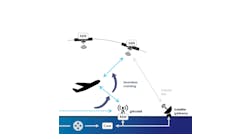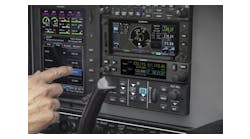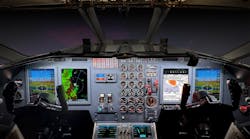Feature
Unapproved Parts
Keys to detecting and identifying bogus parts
By Joe Escobar
June 2004
On Nov. 13, 1995, the FAA opened the Suspected Unapproved Parts (SUP) Program Office in order to address issues related to unapproved parts. Since then, there have been more than 2,500 SUP investigations. We will take a look at what can be done to identify suspected unapproved parts as well as steps you can take to keep unapproved parts from entering the parts inventory.
Approved parts
The following are examples of approved parts.
- Parts produced under a type or production certificate.
- Parts manufactured under a Parts Manufacturing Approval (PMA).
- Parts produced by an owner or operator for maintaining or altering his own product.
- Parts produced under an FAA Technical Standard Order (TSO).
- Standard parts (such as bolts and nuts) that conform to established industry or U.S. specifications.
What is an unapproved part?
According to the FAA’s handout on Suspected Unapproved Parts,
an unapproved part is “A part, component, or material that has
not been manufactured in accordance with the approval procedures in
FAR 21.305 or repaired in accordance with FAR Part 43; that may not
conform to an approved type design; or may not conform to established
industry or U.S. specifications (standard parts). Such unapproved parts
may not be installed on a type certificated product unless a determination
of airworthiness can otherwise be made.”
Basically, an unapproved part is a part that is not approved (does not meet FAA regulations). Here are a few examples of unapproved parts.
Counterfeit parts. These
could be parts that are deliberately misrepresented as being designed
and produced under an approved system. Counterfeit can also include
parts that have reached a design limit (flight hours for example) but
are altered and misrepresented to defraud the purchaser.
Rejected parts. Parts that are rejected during the production process
are unapproved parts.
urplus parts. Unapproved parts sometimes come from surplus situations.
For example, if a supplier that produces parts for an approved manufacturer
directly ships parts to end users without the manufacturer’s
authorization or a separate PMA, that is not an approved part.
Improper maintenance. This includes parts that have been maintained
or repaired and returned to service by persons or facilities not
authorized under FAR Parts 43 or 145.
Identifying unapproved parts
Mechanics must be diligent in identifying unapproved parts. The FAA
offers the following situations that could raise a red flag on
a part being unapproved:
- The quoted price or the price advertised in trade magazines is significantly lower than the price quoted by other suppliers of the same part.
- A delivery schedule that is significantly shorter than that of the same part when existing stocks are depleted.
- The inability of a supplier to provide substantiating data demonstrating the conformity of the part.
- The inability of a supplier to provide evidence of FAA approval for the part.
Rodger Holmstrom, a retired FAA Safety Program safety manager, offers a tip on avoiding unapproved parts. “You have heard that old saying ‘If it sounds too good to be true, it probably is.’ Well, this is definitely true in the aviation industry. Be very wary of parts that are priced way lower than the industry average.”
Here are some more tips from the FAA that parts purchasers can use to help in identifying unapproved parts:
- Inspect product containers for damage, another supplier’s name, or no markings.
- Cross check purchase orders with the delivery receipts for proper part number or component history card.
- Develop a means of ensuring the shelf or service life has not expired.
- Verify that the part identification requirements have not been tampered with (e.g., serial numbers stamped over, label is improper or missing, viboretch or serial numbers at other than normal location).
- Inspect parts for visual defects or abnormalities (e.g., altered or unusual surface, absence of required plating, evidence of prior usage, scratches, new paint over old, attempted exterior repair, pitting, or corrosion).
- Perform supplier audits to ensure suppliers establish and maintain the quality requirements specified in the purchase order.
Al Toimil, president of Boca Raton, FL-based Jet Parts Inc., stresses the importance of knowing your vendors. “It is very important to know your vendors. Make sure they have a quality system in place. Don’t always shop with price being your only factor. If your only criteria on where you purchase your part from is price, then you will eventually get bit.”
Unapproved parts list
Another key way to prevent unapproved parts from being installed
on an aircraft is to keep up on unapproved parts notifications from
the FAA. You can go to www.faa.gov/avr/sups/index.cfm to view the
current list.
Current PMA list
Another thing to keep in mind is that unapproved parts
are sometimes misrepresented as PMA parts. If you are not sure, it
is best to check for yourself. For a current list of FAA PMAs, you can
log onto www.faa.gov/certification/aircraft/av-info/pma/default.htm.
Keeping unapproved parts from entering the system
Our responsibility does
not end with trying to identify unapproved parts. We must do our part
to ensure that we do not allow unapproved parts to enter the aviation
system. The main way we can do this is to ensure proper disposition
of life-limited or unairworthy parts. If items are to be salvaged, be
sure to destroy or mutilate them to make them unusable. If the owner
asks for the parts back, he or she should be educated on proper mutilation
procedures. But be careful with liability. Do not destroy or mutilate
a part that does not belong to your company (a customer’s
part) without his or her direct permission. Doing so can put you in
a legal bind.
Also, be sure to remove data plates from unsalvageable parts and report them to the FAA.
These have been a few tips to help identify unapproved parts and keep them from entering the supply chain. To report suspected unapproved parts, you can fill out FAA Form 8120-11, Suspected Unapproved Parts Notification (obtained from your FSDO or in AC 21-29) and mail to:
SUP
Program Office, AVR-20
13873 Park Center Road
Suite 165
Herndon, VA 20171
Tel: (703) 668-3720
Fax: (703) 481-3002



